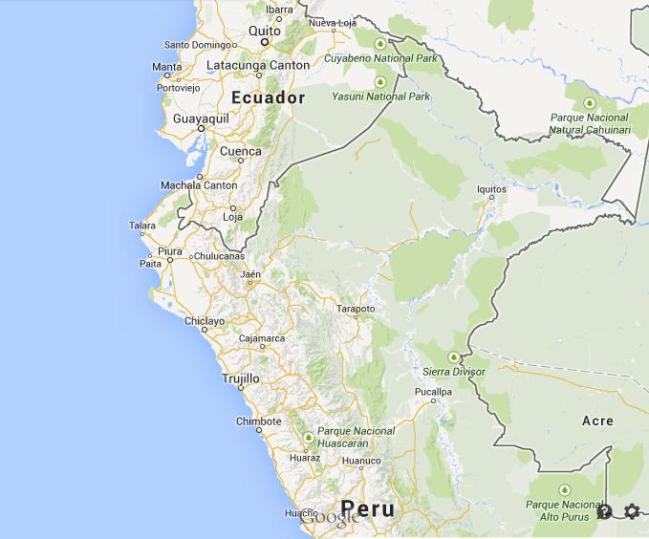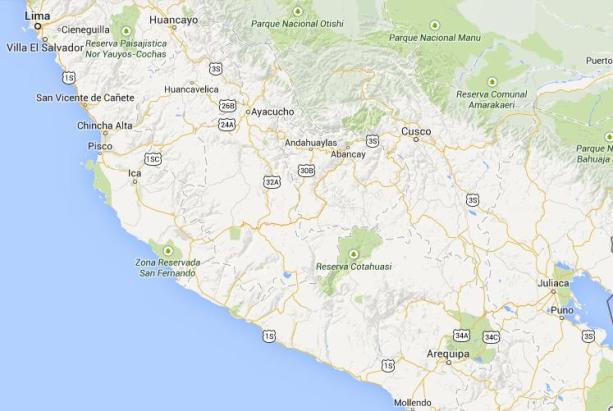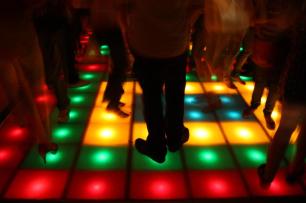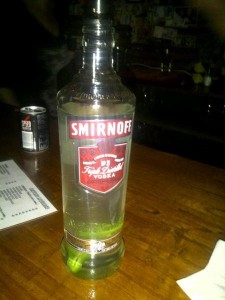Ok so firstly, I’ve written a few posts about Peru already: Cusco, Peru: The Navel of the World, The Orphanage (not the movie), Machu Picchu and final days in Cusco, Machu Picchu: Part 2, Final days in Cusco, and Lake Titicaca, although I wrote them more as blogs to update people on my progress rather than guides. I thought that because I’d spent quite a bit of time in Peru (just over 2 months) I am qualified to provide a bit of information on it, even if I haven’t travelled everywhere. When people make the decision to ‘do’ South America, Peru, mainly because of that big town on the mountain, is generally top of their list. For this reason most places are pretty crowded with tourists young and old, long term and short term, which is fine. I’m not going to get all travel hipster on this, as you want to meet other tourists while travelling, although when we were volunteering in Cusco, living in a beat up area far away from all the tourist places, we did get a little snooty over them. Come to think of it however, most volunteers didn’t do anything touristy in there time there, and a few didn’t even do Machu Picchu! They took being a local a little too far. Anyway, every country in South America is diverse, but Peru is super diverse. From the amazon jungle surrounding northern Iquitos to the white beaches of Mancora through the vast, wealthy city of Lima down south to the desert oasis of Huacachina, Nazca lines, Colca Canyon, Incan Jewell of Cusco, Machu Picchu and Lake Titicaca. It has everything, but can be taken slowly or quickly, depending on your time frame and what you want to do… So lets start with
The North:
 Now northern Peru is vast and seems overwhelming, but isn’t, it all depends on how long you want to take going down. Now I don’t actually know this area, so what I’m going to recommend is based on what friends have told me:
Now northern Peru is vast and seems overwhelming, but isn’t, it all depends on how long you want to take going down. Now I don’t actually know this area, so what I’m going to recommend is based on what friends have told me:
Mancora– Mancora has made its name in Peru for specializing in three things, sun, surfing and soirées (just wanted an excuse to keep the alliteration going. I meant parties). Located right at the tip of Peru, 85 miles from the Ecuadorian border, it’s a tourist hub and is very aware of that. Expect some great nights out, time chilling on beaches and if you’re into surfing, some great waves. Stay at Loki. 
Stock beach photo that could be anywhere in the world. Trust me, google images said it was Mancora.
Los Organos– Pretty similar to Mancora but a little less well known, it will doubtlessly provide the same experiences, although apparently is a better place for first time surfers to learn, as the water’s a bit more forgiving. It is also home to Pacifico Adventures Ecoturismo, a company that allows you to head out into the ocean and view humpback whales, dolphins and other marine life in their natural habitat. Trips last about three and a half hours and tickets cost S/. 120 for adults and S/. 100 for children.

Poser
Chicama– I’m merely including this for surfers. Chicama is a tiny town that also happens to have a stretch of coast line that has created the longest wave in the world, at 1.6 miles. Pretty narly. 
I’m sure someone has come up with some cool Chicama pick-up lines (“That wave’s actually not even the longest thing in town ;D”)
Huanchaco– A little north of the city of Trujilo, this beach town is a bit more low key than Mancora, but still has some nice beaches. 
You can get photos like this too if you come to Huanchaco
Trujilo- While I’m sure this is a really charming, nice city on its own, it is also close to Northern Peru’s best Pre-Colombian (pre-European influence) archaeological monuments, Chan Chan, the largest adobe (mud-brick) city in the world and Las Huacas del sol y de la Luna (temples of the sun and moon). 
Chan Chan (no influence on the can can)
Huarez- Huarez is home to the less expensive and alternative (hipster) trek to the Machu Picchu Inca trail, the Santa Cruz trek. The pictures I’ve seen of it look really awesome, and I think I’d like to do it when I come back to Peru, but here’s an article by someone who did it without a guide. I’d recommend doing an organised trek though, and through this agency http://www.huascaran-peru.com/, it seems 3 days is the minimum. If you have the time and money it looks stunning.  Iquitos– The best way to visit the Peruvian Amazon rainforest, Iquitos is actually the largest city in the road inaccessible by road, although to be honest, getting there from other parts of Peru or Colombia would be a week long bus ride anyway. So you either have to fly in, or get a boat (fly, it’s relatively cheap). The attraction of the city is obvious, go there to take an Amazon tour, but while there, expect certain things. First, it’ll be hot and humid all year round, with humidity averaging at 90% (that’s very humid). Second, as there are no roads, the city is dominated by motorcycles and motorcarros/rickshaw, so watch out for that. Third, as there are no roads, it’s amenities are also very basic, so don’t expect luxury here. Apart from an Amazon tour, which you can book from your hostel (although this- http://www.dawnontheamazon.com/ looks the best), maybe also check out the Amazonian Manatee (sea cow) Orphanage, and the Monkey island (included in a Dawn on the Amazon tour), but Wikitravel has some useful info on ithttp://wikitravel.org/en/Iquitos, as will lonely planet.
Iquitos– The best way to visit the Peruvian Amazon rainforest, Iquitos is actually the largest city in the road inaccessible by road, although to be honest, getting there from other parts of Peru or Colombia would be a week long bus ride anyway. So you either have to fly in, or get a boat (fly, it’s relatively cheap). The attraction of the city is obvious, go there to take an Amazon tour, but while there, expect certain things. First, it’ll be hot and humid all year round, with humidity averaging at 90% (that’s very humid). Second, as there are no roads, the city is dominated by motorcycles and motorcarros/rickshaw, so watch out for that. Third, as there are no roads, it’s amenities are also very basic, so don’t expect luxury here. Apart from an Amazon tour, which you can book from your hostel (although this- http://www.dawnontheamazon.com/ looks the best), maybe also check out the Amazonian Manatee (sea cow) Orphanage, and the Monkey island (included in a Dawn on the Amazon tour), but Wikitravel has some useful info on ithttp://wikitravel.org/en/Iquitos, as will lonely planet.
The South:
 The South is more my area of Peru. The only bit I didn’t do was the Colca Canyon, but obviously do that if you get down here (I didn’t because I was being good and working so hard at my orphanage).
The South is more my area of Peru. The only bit I didn’t do was the Colca Canyon, but obviously do that if you get down here (I didn’t because I was being good and working so hard at my orphanage).
Lima– If you want a bit more of an in depth review of Lima, I have one here. Effectively, while it is a vast, sprawling city, its best bits, and where most tourists go, is Miraflores. An upmarket neighborhood situated on the coastal cliffs that overlook the Pacific, most of the hostels surround Kennedy Park, a large and pleasant park that usually has local music and dancing going on in the evenings, and a large wild (but not feral) cat population. Stay at Flying Dog Hostel if you want to be beside the best sandwich place in Miraflores, or Parawana for a large, well-run party hostel. There’s also some decent paragliding off one of the cliffs, and surfing below on the beaches. Try out ceviche at La Mar on Avenida La Mar. Don’t stay more than a few days though, as there’s not a huge amount to do and it was cloudy all the time I was there.  Pisco/Paracas– Urgh, Pisco. This complete dive of a town is where I had my passport and camera stolen, so try to spend as little time as possible there. From the bus stop it’s a 15 minute taxi to Paracas, the coastal town which offers boat tours to what Peruvians call the ‘Little Galapagos’, some rock formations that have wildlife and similar geography to the Galapagos. I did the tour and it was pretty cool, but nothing to write home about. I got a cool picture of a sea lion doing an awesome pose, but then my camera got stolen, denying the world some great photography. Go if you’ve got some spare time, and stay at Kokopelli.
Pisco/Paracas– Urgh, Pisco. This complete dive of a town is where I had my passport and camera stolen, so try to spend as little time as possible there. From the bus stop it’s a 15 minute taxi to Paracas, the coastal town which offers boat tours to what Peruvians call the ‘Little Galapagos’, some rock formations that have wildlife and similar geography to the Galapagos. I did the tour and it was pretty cool, but nothing to write home about. I got a cool picture of a sea lion doing an awesome pose, but then my camera got stolen, denying the world some great photography. Go if you’ve got some spare time, and stay at Kokopelli.  Ica/Huacachina– Ica is similar to Pisco in that it’s effectively a gateway to something more interesting, and what a place Huacachina is. It’s really the closest thing I’ve seen to an oasis, although upon closer inspection it’s a little… artificial. However it’s not the town that makes Huacachina interesting, it’s the desert. You can book a sandboarding/dune buggy tour from your hostel (I stayed at Bananas Hostel, pretty sweet), for about 35 soles, which is about 8 pounds, and it is pure awesomeness from start to finish. The buggies are driven by local guys who evidently get a little bored of what they do, so to spice things up generally seem to drive in a way that the ride feels like a rollercoaster- slowly ascending the dunes before dropping suddenly and careering downwards. Eventually he’ll stop and give you an opportunity to attempt some sandboarding. I’ve never snowboarded so was pretty terrible, but our group quickly worked out that belly-boarding was a lot more fun, although a little painful at times. Advice: Go for the later one, I think it was 4pm, as then you get a sunset at the end. https://www.facebook.com/photo.php?v=10152261352773052&set=vb.710168051&type=3&theater Link to a video of it.
Ica/Huacachina– Ica is similar to Pisco in that it’s effectively a gateway to something more interesting, and what a place Huacachina is. It’s really the closest thing I’ve seen to an oasis, although upon closer inspection it’s a little… artificial. However it’s not the town that makes Huacachina interesting, it’s the desert. You can book a sandboarding/dune buggy tour from your hostel (I stayed at Bananas Hostel, pretty sweet), for about 35 soles, which is about 8 pounds, and it is pure awesomeness from start to finish. The buggies are driven by local guys who evidently get a little bored of what they do, so to spice things up generally seem to drive in a way that the ride feels like a rollercoaster- slowly ascending the dunes before dropping suddenly and careering downwards. Eventually he’ll stop and give you an opportunity to attempt some sandboarding. I’ve never snowboarded so was pretty terrible, but our group quickly worked out that belly-boarding was a lot more fun, although a little painful at times. Advice: Go for the later one, I think it was 4pm, as then you get a sunset at the end. https://www.facebook.com/photo.php?v=10152261352773052&set=vb.710168051&type=3&theater Link to a video of it. 

Bananas Hostel
Nazca– This depends on if you enjoy seeing far off shapes in the ground. I didn’t have the money to shelve out $80 for a plane ticket to see the lines, but a friend did and gave me the pictures, which is the equivalent of actually doing it.
Cusco– At last we’re on to Cusco, the place I lived and worked in for 7 weeks and where the Incans started their vast civilization (no coincidence those two are connected). As well as being the place to visit Machu Picchu from, Cusco is also full of culture and fun. During my stay there for example, there was a festival held every Sunday for 4 weeks based on water fights. As in the entire city would have one massive water fight. Like it was urban warfare with water balloons. So. Much. Fun. Plus there’s some great museums located just off the Plaza de Armas. Check out the Inka Museum, which is in need of renovation but interesting nonetheless, but probably the two best are the Museo de Arte Pre-Colombino and the Centro de Textiles Traditionales del Cusco. The Chocolate and Pisco museums are a decent way to spend some time too. In terms of archaeology, something you’d hope to see when visiting the Incan capital, Cusco is a little weak. The Spanish managed to destroy pretty much everything when they sacked the city, meaning only a walled complex remains on one of the hills above the city named Saksaywaman, part of the attraction being the fact you’ve just been to see sexy woman. HA! Eating in Cusco: If you’re in the plaza and fancy a smoothie and quick sandwich, head to Yajuu! which is pretty cheap and very tasty, with loads of interesting combinations. Two great places for hungover (or otherwise) breakfasts are Jack’s Cafe, which is great but generally has a long queue outside, and Cicciolina, which is a block away. Both aren’t too pricey and serve up top quality food. Others- Chicha, MAP Cafe, Limo, Inka Grill, Greens Vegetarian Food. If you can try out some Cuy, or Guinea Pig. Loveable animals are so much tastier. Anyway… Drinking: Cusco is a great, great place for nightlife. Did I mention it was great? It is. Pubs- Paddy’s and Norton’s. One’s Irish, one’s English, both were great places for the volunteers to start a night out, or just play some pool and shoot some darts. Bars- Ukuku’s. Wow, we discovered this off Tripadvisor and it immediately became our favorite bar. Decorated with some interesting murals and cool lighting, it begins by playing alternative and pop music in the early evening, before eventually hosting a local band or salsa night. The quality of these varied, but we definitely had some good times in there. There’s also the Muse, a good chill out bar and salsa club on fridays and saturdays, Km 0, El Pisquerito and London Town. If you’re English just go into London town for a laugh. In terms of clubbing, there’s Inka Team and Mama Africa for some Latin infused-pop (Inka Team also does free salsa lessons from 9-11pm) and Mushroom’s (below Mama Africa’s) for electronic. In terms of a rave, The Temple is the place to be. If you’re at Wild Rover, Loki or Milhouse, you should be taken here as part of a night out. If you’re a guy, watch out for over-zealous gringo-hunters. You’ll know when you see them. Booking Machu Picchu and other activities: For the best prices and loads of travel agents, head to Calle Plateros, just off the Plaza. If you’re going to do the Jungle Trek (the one I did, unreally awesome), don’t pay more than $250, for rafting included. I had a friend get everything- rafting, ziplining, biking etc for $170, and he said it was the same experience, so try to shop around a bit. Salkantay will probably be a bit more. From Cusco you can also visit other parts of the nearby Sacred Valley. From that same street you can probably book a general tour that covers most of the sites, but if you want to pick a couple, Ollantaytambo and Pisac are the best. Cusco will always have a place in my heart for the times I spent at the orphanage there, it’s brilliant weather and the friends I met. If you are thinking of doing some volunteering in Cusco, you can’t go far wrong with Elim, sponsored by Original Volunteers, and run by Jeremy Cuba Escobar (his name on facebook). The work they do there is simply incredibly considering some of the stories of these kids. 

Final photo from Cusco on Facebook had this caption: “My final day in Cusco with the boys of Elim, an organisation that takes in children from the street, broken homes, and orphans. It is hard to put into words the job that Jeremy and Nilda are doing, with the help of people like Yeicob, but the effect is evident as soon as you step through the door. These are some of the most happy, thoughtful, and inspiring children you can find, and it´s safe to say the effect they´ve had on me has been far greater than any material gift or entertainment I could bring to them in my 6 weeks. I would recommend anyone visiting Cusco to spend some time there if possible.”
Lake Titicaca– The lake is actually split 60/40 with Bolivia, and although both sides are listed by Lonely Planet as essentials to do in South America, if you were to choose one, I’d recommend Isla Del Sol on the Bolivian side. Nevertheless, I had a great experience on my 2 day tour from Puno after a nightbus from Cusco. I think I paid about 180 soles, although you can probably get it for less. Lake Titicaca is a magical place, so serene and calming, and the different cultures on each island are really interesting. Don’t miss it.
So this was my guide to Peru. I know I’ve missed out Arequipa and the Colca Canyon, but I never went there and know everyone else has raved about it, so thought it would be a little excessive to say more. Peru can be a little bit of a shock to the system if you’ve come from the West, but its variation, beauty and people will not disappoint. Enjoy.





























































